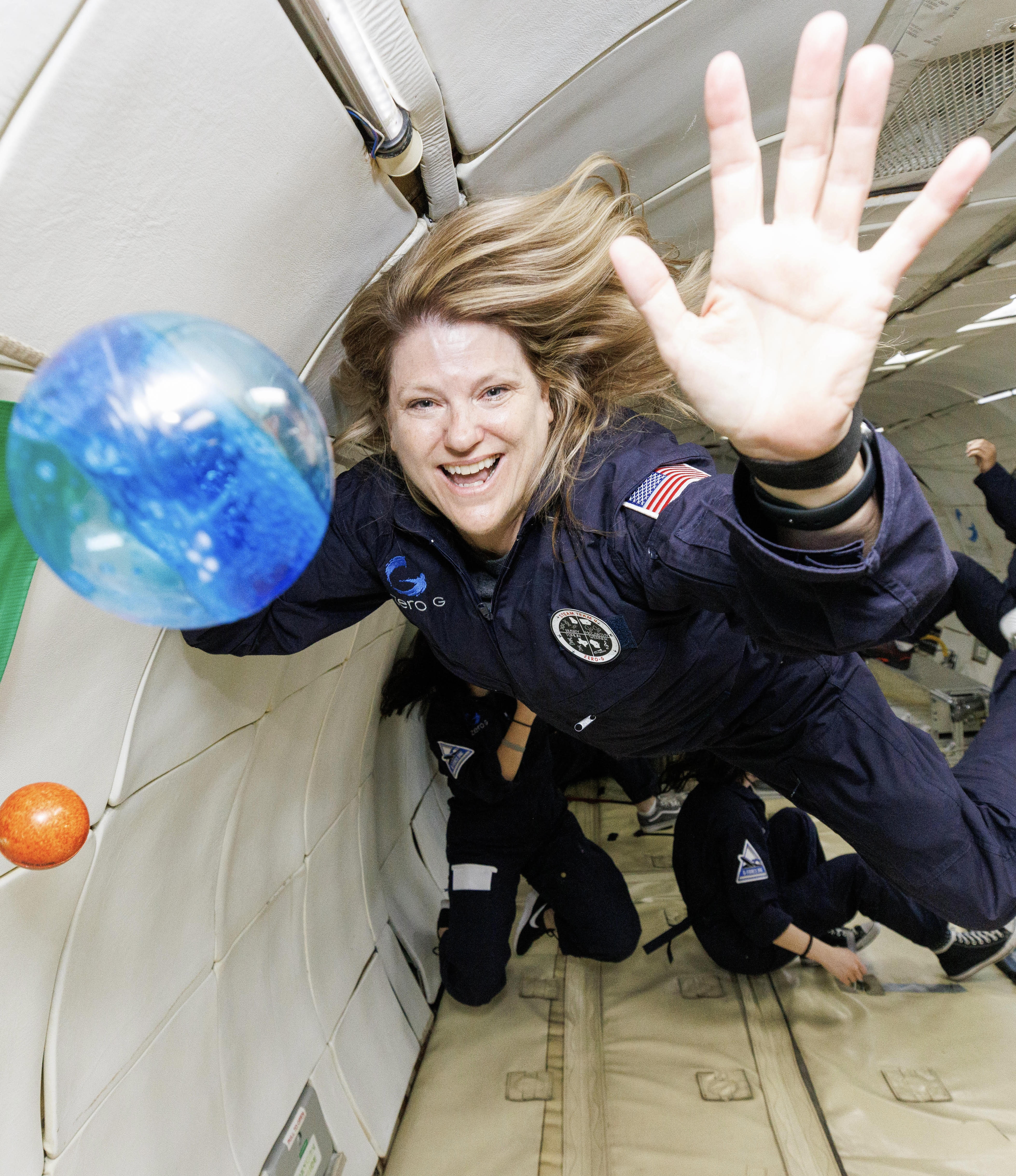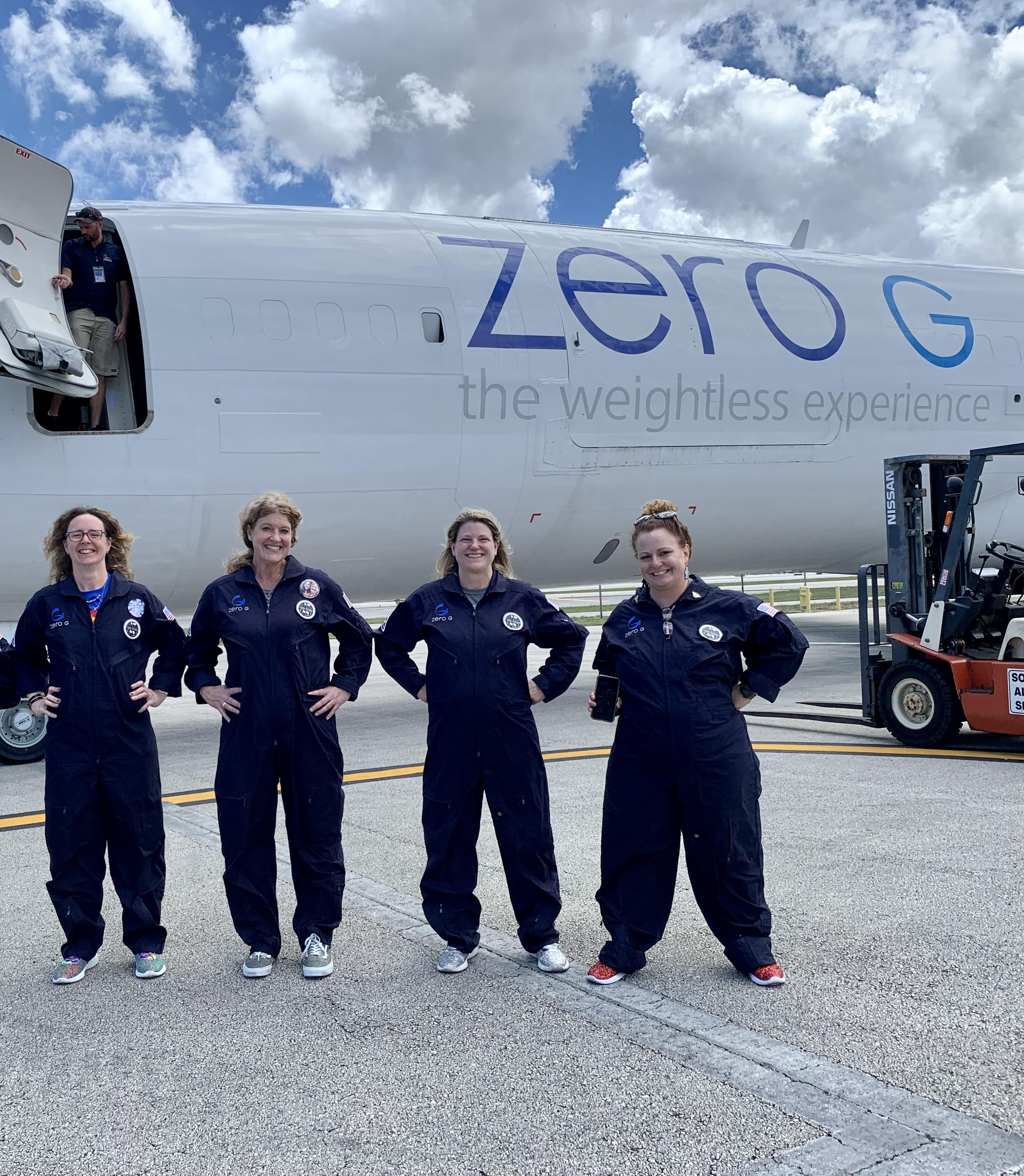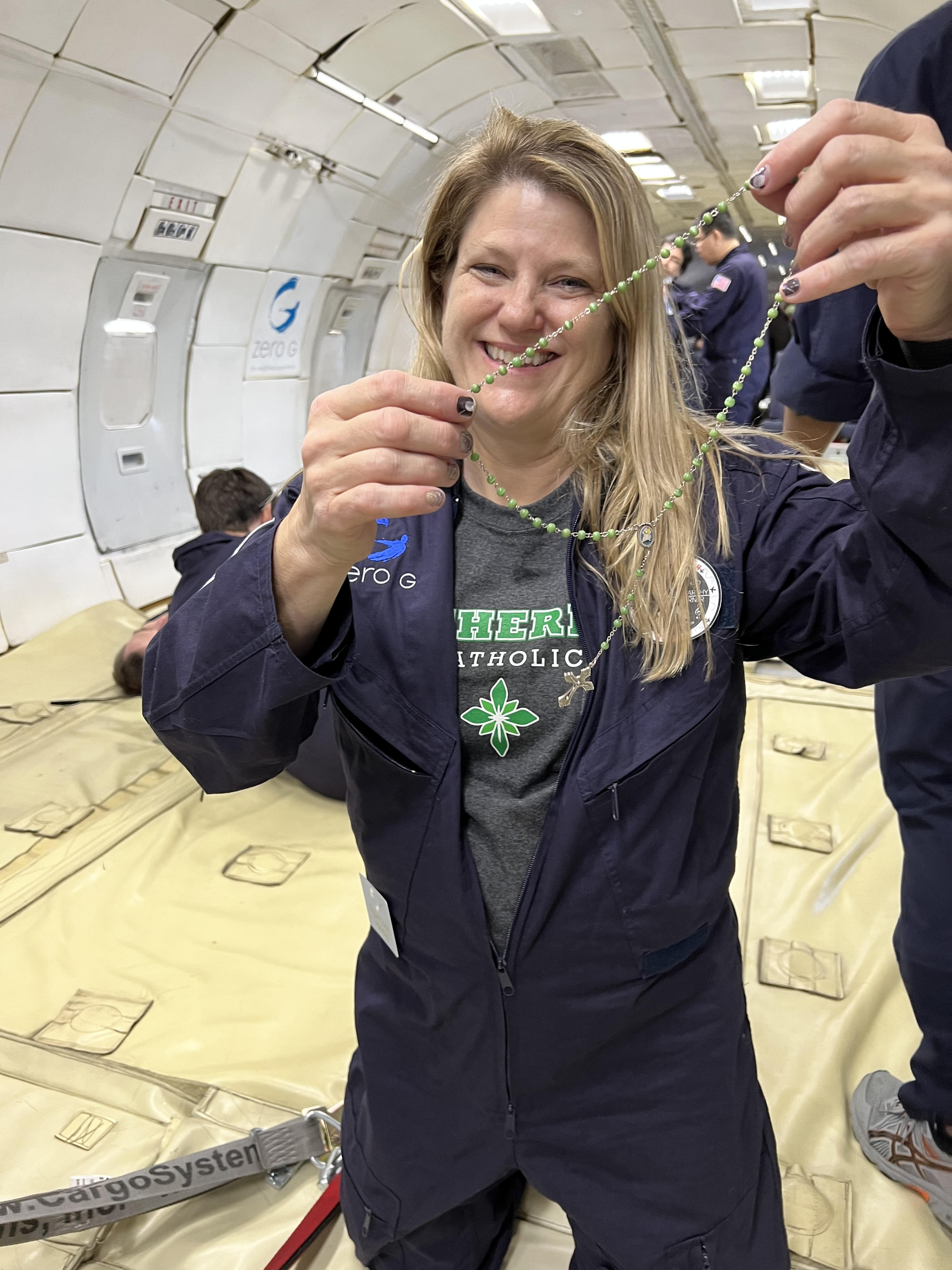Discover the Difference: St. Theresa Science Teacher Takes Flight
by Diocese of Des Moines | October 18, 2022

Science teacher Ronda McCarthy is always designing the next experiment with her students -- even when those experiments take her beyond the boundaries of gravity! She was recently selected to participate in the Embedded Teacher Program, a partnership between the Wisconsin Space Grant Consortium, the National Space Society, and the Zero Gravity Corporation (ZERO-G).
McCarthy first learned about the ZERO-G flight opportunity from a fellow educator while presenting at a conference in Houston, Texas. The colleague connected McCarthy with Dr. Kevin Crosby, Carthage College physics professor and director of the NASA Wisconsin Space Grant Consortium. Crosby uses ZERO-G flights to research microgravity environments. This research is crucial to the future of long-term human space habitation. As part of this research, Crosby has taken teachers up on microgravity flights to help inspire student interest in research and engineering.
in Houston, Texas. The colleague connected McCarthy with Dr. Kevin Crosby, Carthage College physics professor and director of the NASA Wisconsin Space Grant Consortium. Crosby uses ZERO-G flights to research microgravity environments. This research is crucial to the future of long-term human space habitation. As part of this research, Crosby has taken teachers up on microgravity flights to help inspire student interest in research and engineering.
McCarthy's journey led her to attend the Embedded Teacher Workshop in the fall of 2021 at Carthage College in Kenosha, Wisconsin. While attending the workshop, she explored the physics behind microgravity and its influence on the behavior of fluids.
"Dr. Crosby was amazing and patient as he taught us about the physics needed for our microgravity experiments," shared McCarthy. "We also learned about cutting-edge research for performing surgery in space from a medical researcher in Louisville, a research team from Kentucky, a team from Kennedy Space Center, a research team from Duke University, and a group of student researchers from Iowa State University."
 Following the workshop, McCarthy developed a proposal in collaboration with her students outlining experiments to test microgravity. Her proposal resulted in an invitation to join the Embedded Teacher Team in the spring of 2022. Ultimately, more than 600 students across Iowa submitted ideas that helped McCarthy's students design their final experiments for the flight.
Following the workshop, McCarthy developed a proposal in collaboration with her students outlining experiments to test microgravity. Her proposal resulted in an invitation to join the Embedded Teacher Team in the spring of 2022. Ultimately, more than 600 students across Iowa submitted ideas that helped McCarthy's students design their final experiments for the flight.
"This opportunity allowed me to design challenges and engage my students in cutting-edge science while incorporating required teaching standards and benchmarks," said McCarthy. "Students can learn so much about real research and science and contribute to it in meaningful ways. As a result, students' confidence increases, they build resilience, and they discover new, relevant concepts."
On May 11, 2022, McCarthy, along with Lisa Werner (band teacher from Wisconsin), Laura Tomlin (science teacher from Texas), and Becky Busby (STEM teacher from Georgia), boarded the ZERO-G G-Force One Aircraft. Together the teachers experienced 11 minutes of weightlessness throughout a series of two-hour flights, floating in free-fall as the flight executed 30 parabolas, each lasting about 22 to 24 seconds.
During the flights, McCarthy recreated a 2013 experiment performed by astronaut Chris Hadfield on the International Space Station to determine how liquids behave in space. McCarthy also conducted an experiment by astronaut Don Pettit in which tiny droplets of water in the presence of an electrically charged needle execute orbits around the needle, like planets orbiting a star. The demonstration helps students understand the nature of electrical forces in analogy to the force of gravity.
International Space Station to determine how liquids behave in space. McCarthy also conducted an experiment by astronaut Don Pettit in which tiny droplets of water in the presence of an electrically charged needle execute orbits around the needle, like planets orbiting a star. The demonstration helps students understand the nature of electrical forces in analogy to the force of gravity.
And what's on the horizon for McCarthy? She plans to continue professional development through the STEM Advisory Council's LIFT Scholarship. In addition, she is presenting her Embedded Teacher Experience at educator conferences throughout the United States. McCarthy is also partnering with One Giant Leap Australia to develop STEM culture exchange programs between students and educators. A team of 12 educators, including McCarthy, meet monthly to formulate plans for the STEM exchange program. McCarthy will travel to Australia in the summer of 2023 to implement this plan.
When asked how these programs will enhance her work as an educator, McCarthy responded, "I am excited about these opportunities. I aim to find innovative ways to help my students deepen their love of science through enriching classroom experiences."